The Porsche Cayenne Buyers Guide
 Thinking of buying a Porsche Cayenne? Our Porsche Cayenne buying guide highlights potential issues to avoid and can help you successfully purchase a quality pre-owned Porsche Cayenne.
Thinking of buying a Porsche Cayenne? Our Porsche Cayenne buying guide highlights potential issues to avoid and can help you successfully purchase a quality pre-owned Porsche Cayenne.
If you’re just about to take the leap and buy a used Porsche Cayenne, this guide will highlight some of the technical issues to be aware of before you commit to buy. The early Cayenne cars are now extremely affordable and can be fun to own.
Finding the right car is never simple, but with some luck and armed with the right information from our Porsche Cayenne buyers guide, you can pick up a bargain. 18-year-old cars with reasonable mileage are now available for a small percentage of their original cost.
The Cayenne is absolutely a Porsche and likely has more expensive maintenance requirements than most SUVs. For that reason, some owners seriously neglected the car by trying to equate work on a domestic SUV to the more expensive requirements of the Porsche Cayenne. Our Porsche Cayenne buying guide will help you understand what mechanical issues to look for and what to avoid.
PcarWise Guide to Buying a Used Porsche Cayenne
How Do You Tell A Good Porsche Cayenne From A Bad One?
Our guide to buying a used Porsche Cayenne will help you find the bargain and avoid the bad investment. There’s no fluff or niceties here – there are plenty of resources online that bash on about horse power, cosmetic variants and the niceties of the Cayenne. All well and good, but how do you tell a good Cayenne from a bad one? What are the potential pitfalls? What known problems exist and how do you avoid them? We have the answers you need.
We concentrate on the technical things that might cost you money later if you weren’t aware of them prior to buying the car. There are risks if you’re not cautious, but with some insights and careful shopping, there are bargains to be had.
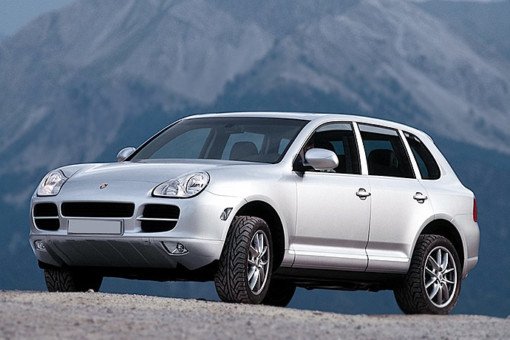

What Do We Know About The Cayenne So Far?
 You might be surprised to know that when the Cayenne was launched in 2003, it was met with somewhat distain by Porsche fans. Why would a manufacturer famed for small sports cars, turn to the SUV?
You might be surprised to know that when the Cayenne was launched in 2003, it was met with somewhat distain by Porsche fans. Why would a manufacturer famed for small sports cars, turn to the SUV?
Ironically, the Cayenne and the later Macan now out sell the 911, Boxster and Cayman combined. With hindsight, the Cayenne was a stroke of genius and set the trend for many other manufacturers to follow. The luxury SUV market now includes Bently, Aston Martin, Rolls Royce, Lamborghini, Maserati and plenty of others.
Originally, Porsche launched a V8 S and Cayenne Turbo models. Subsequently adding the V6 base model and the hybrid most recently. The Cayenne is a slick SUV – you can pop the kids in the back of a 450HP twin turbo V8 Porsche and clock 60 mph, in a mere 5.6 seconds, on the way to soccer practice – who doesn’t want that?
First of the Porsche SUV Family
 The Cayenne is fun and exhilarating to drive, yet can be used as a practical SUV every day. Launched in 2003, the first-generation Cayenne underwent a facelift in 2008 and changes to styling, new engines and various luxury enhancements were added until the end of production in 2010. The arrival of the second generation in 2011 heralded sleeker looks, lower ride profile and enhanced performance. The second generation was face-lifted in 2014 and continued in production until 2017 with most notably, the introduction of a plug-in hybrid version.
The Cayenne is fun and exhilarating to drive, yet can be used as a practical SUV every day. Launched in 2003, the first-generation Cayenne underwent a facelift in 2008 and changes to styling, new engines and various luxury enhancements were added until the end of production in 2010. The arrival of the second generation in 2011 heralded sleeker looks, lower ride profile and enhanced performance. The second generation was face-lifted in 2014 and continued in production until 2017 with most notably, the introduction of a plug-in hybrid version.
The Cayenne is not your standard SUV and requires more expensive maintenance. That definitely led to some early versions being very neglected and servicing overlooked. In fact, we had one abandoned at our shop where just the basics to make it road worthy, more than exceeded the value of the car.
Sports and Luxury Car Technology
Right from the start, the Cayenne came loaded with technology designed to produce a luxurious ride combined with the nimble and responsive nature of a sports car. Adaptive air suspension, Porsche Dynamic Chassis Control (PDCC), active headlights, and the Porsche Active Suspension Management (PASM), all contribute to an outstanding ride for such a heavy car. The Cayenne is an excellent blend of off-road capable, family carrier and twisty corner master.
The early version of the Cayenne featured a more traditional spring-based suspension that is a little stiffer than the air-ride version that came along with the second generation. The early version ride is definitely orientated towards performance as opposed to comfort.
As with most version one of anything, the early generations of the Cayenne suffered more technical problems. As the platform has matured, so has the technology and the reliability. The early versions are available at bargain prices, but be aware, it’s not difficult to spend the value of the car on maintenance and repairs!
Used Porsche Cayenne Maintenance Costs – Spare Parts – Repairs
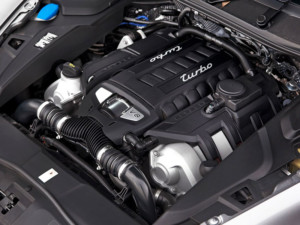 You’re buying a Porsche, so don’t compare running costs to a small domestic SUV! Yes, parts and some labor costs will be higher than a typical American or Japanese SUV. However, save for a few notable items discussed below, the Cayenne is solid and reliable.
You’re buying a Porsche, so don’t compare running costs to a small domestic SUV! Yes, parts and some labor costs will be higher than a typical American or Japanese SUV. However, save for a few notable items discussed below, the Cayenne is solid and reliable.
The later Cayenne shares some parts with the Panamera platform and most are readily available directly from Porsche. There are plenty of third-party vendors online that can offer parts at lower cost than Porsche directly. There is also a good deal of experience and expertise in independent Porsche repair shops to help make the maintenance of your used Cayenne cost effective.
You’re going to pay a little more for an oil change and standard maintenance items, however, don’t try to cheap these. It’s really important to have the car inspected and serviced by a professional with genuine Porsche expertise. A good mechanical understanding of these cars can help identify issues early and save you money in the long term. See our guide to Porsche repair shops for your local expert or contact us and we’ll make a recommendation for you.
Porsche Cayenne Maintenance Schedule
It’s important to understand where the Cayenne you’re considering buying falls within it’s recommended maintenance schedule. The maintenance schedules are based on mileage and elapsed time. The early Cayenne is now likely in a mode where elapsed maintenance time is exceeding mileage. This is where a competent Porsche repair shop is needed to provide knowledge based maintenance recommendations.
Compare the known maintenance history of your prospective Cayenne with our maintenance schedules. This should enable you to better understand the asking price, the near future maintenance requirements of the car and perhaps help identify a well maintained Cayenne from a neglected one.
Buying an older Cayenne and not realizing major maintenance is due by elapsed time, is not the smartest thing you can do!
What’s a Used Porsche Cayenne Like to Live With?
 All generations of the Cayenne are easy to drive, park and have fun in. The Cayenne offers a comfortable ride for a family, reasonable luggage room and rear seats that fold to provide more carrying space. The shape at the rear end does lend itself to luggage but not to large dog breeds. The original versions had the ignition key on the left as a throwback to the Porsche 911 – that can be confusing!
All generations of the Cayenne are easy to drive, park and have fun in. The Cayenne offers a comfortable ride for a family, reasonable luggage room and rear seats that fold to provide more carrying space. The shape at the rear end does lend itself to luggage but not to large dog breeds. The original versions had the ignition key on the left as a throwback to the Porsche 911 – that can be confusing!
Early versions have plastic interior parts that easily become discolored due to wear and tear. However, there is a healthy used parts market that can solve some of those problems easily. Generally, the interior is well laid out and practical.
The original Cayenne is not an off-road vehicle. Porsche’s 4-wheel drive system has improved considerably through the Cayenne generations. However, the more challenging situations, such as snow on a slope, mud or gravel will have you wishing you bought a Land Rover!
 If you decide to enjoy the sportier side of the V8 Cayenne, you’ll need a larger budget for fuel, tires and brakes. The V8 can be quite thirsty when unleashed. The awesome stopping power of the brakes combined with smooth braking performance requires large, expensive and soft brake material. This equals higher wear rates and expensive brake jobs.
If you decide to enjoy the sportier side of the V8 Cayenne, you’ll need a larger budget for fuel, tires and brakes. The V8 can be quite thirsty when unleashed. The awesome stopping power of the brakes combined with smooth braking performance requires large, expensive and soft brake material. This equals higher wear rates and expensive brake jobs.
When the Cayenne was launched, tire manufacturers were faced with a different challenge. A high-performance vehicle, heavy and wearing large rims. While the Cayenne falls into the SUV category, it requires tires from a smaller subset of those available for SUVs. Don’t go cheap! The right tires for the Cayenne are at the more expensive end of the list and we typically recommend a European tire manufacturer that makes tires that are specifically rated for the Cayenne. Avoid a Cayenne with 21-inch rims – very few choices for these tire sizes.
Which Cayenne Would We Buy?
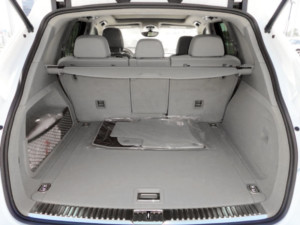 The early generation facelift Cayenne is definitely the sweet spot right now. 2009 through 2011 cars are available in the mid-teens and represent good value. Version 1 facelift of the Cayenne comes with significantly less of the expensive or catastrophic problems seen on the first version. However, these are years that represent sparse sales numbers for Porsche after the economic crash associated with the housing bubble. If you can find a good Cayenne in these years, it likely represents the best value for money and least risk for expensive repairs.
The early generation facelift Cayenne is definitely the sweet spot right now. 2009 through 2011 cars are available in the mid-teens and represent good value. Version 1 facelift of the Cayenne comes with significantly less of the expensive or catastrophic problems seen on the first version. However, these are years that represent sparse sales numbers for Porsche after the economic crash associated with the housing bubble. If you can find a good Cayenne in these years, it likely represents the best value for money and least risk for expensive repairs.
The early first-generation Cayenne is of course the bargain and as cheap as chips. If you could find a version 1 Cayenne that has had substantial repair work completed to address the known problems, you should be in good shape. A lot of car for very cheap money.
The early versions are great candidates for off-road modifications. There are a number of companies offering to convert the Cayenne into a rock climbing, go anywhere vehicle. With the addition of some parts designed to defend against the environment and appropriately sized wheels and tires, a suspension lift, and of course a winch, it’s possible to have a lot of fun in the woods and mountains! One such company is Berg Performance in Denver, CO.
So, if you’re in the market for buying a used Porsche Cayenne, what should you be paying attention to before you commit to buy?
Potential Mechanical Issues To Look Out For On A Used Cayenne
Porsche Cayenne Pre-purchase Inspection

The first step, once you’ve identified a Cayenne candidate, is to get a thorough inspection by a local Porsche expert. The pre-purchase inspection is designed to identify mechanical problems that may not be clearly evident at first glance. In our buyer guide below, we’ve extensively highlighted those potential issues to be on the look out for. Getting a repair history on the car, if available, is helpful and will instantly identify or eliminate potential problem areas.
The number of previous owners doesn’t necessarily matter, but it’s wise to consider this type of car is likely to be owned for the purposes of business use, long commutes and family weekends. Expect to see higher mileage from fewer owners and hopefully a regular maintenance pattern.
If a seller wont let you inspect the car, walk away.
Consider who is selling the car. If you’re buying from a used car dealer, do your research to learn where the dealer got the car. If it’s a dealer that specializes in Porsche, well and good. However, if the dealer’s normal trade is low cost mini vans, you need to do some serious thinking. The Cayenne can eat you out of house and home if you pick a bad one.
Driveshaft Support Bearing Failure
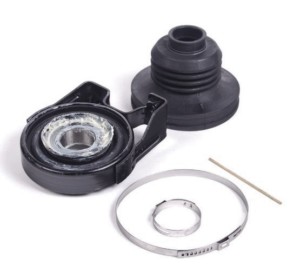 This is a very common failure on the Cayenne. During a test drive of a used Cayenne, listen out for a clunk or thump in the center of the car when accelerating.
This is a very common failure on the Cayenne. During a test drive of a used Cayenne, listen out for a clunk or thump in the center of the car when accelerating.
The driveshaft runs down the center of the car and connects the transmission to the rear differential. In the middle of the shaft is a supporting bearing that the shaft rotates upon. When the center support bearing fails, the shaft wobbles, vibrates and thumps during acceleration.
You’d be hard pressed to find an early Cayenne that hasn’t experienced this problem or currently be somewhere close to experiencing it again. Porsche’s replacement for the bearing wasn’t much better than the original and required the removal of the driveshaft. In some cases, replacement of the driveshaft was the chosen option.
 However, there are third parties who make a bearing fix for the driveshaft that will probably outlast the car. The aftermarket solution does not require the driveshaft to be removed to complete the job and usually will save you money on the repair.
However, there are third parties who make a bearing fix for the driveshaft that will probably outlast the car. The aftermarket solution does not require the driveshaft to be removed to complete the job and usually will save you money on the repair.
The aftermarket versions bolt to the car and clamp around the original bearing. This made the repair work considerably cheaper and quicker while improving on the original design.
This was the recommended way to solve this problem, so don’t be surprised if the used Cayenne you plan to buy already has the aftermarket version installed.
Steam Power Cayenne – Coolant Pipes Leak
 The original V8 Cayenne engine featured a series of plastic cooling pipes that ran front to back through the valley of the engine below the intake manifold.
The original V8 Cayenne engine featured a series of plastic cooling pipes that ran front to back through the valley of the engine below the intake manifold.
Running plastic coolant pipes underneath the intake manifold seems like a reasonable idea, until you realize these pipes are made from a plastic that can’t handle the hot environment they live in. Once they degrade and a leak starts, it quickly speeds to a point where large clouds of steam can be seen billowing from under the hood when the engine is running – steam powered Cayenne!
A coolant leak can be deadly for any engine – overheating of the engine due to a loss of coolant very quickly does damage that could result in a total failure and an engine replacement being needed. The coolant pipe failure in the early Cayenne typically happened quickly and produced large amounts of steam. This usually resulted in the driver stopping quickly and minimizing any damage to the engine.
 There is an update kit available to permanently fix this problem and change the plastic pipes to metal ones. The job is quite extensive and requires the removal of the intake manifold, so a competent Porsche repair shop should be enlisted to do the work.
There is an update kit available to permanently fix this problem and change the plastic pipes to metal ones. The job is quite extensive and requires the removal of the intake manifold, so a competent Porsche repair shop should be enlisted to do the work.
The problem with the coolant pipes was so common that only on low mileage cars should it still be an issue. Definitely worth scoping underneath the intake manifold to find out if your prospective purchase has been updated. If your Cayenne has not been updated, it will need to be at some point in the future and this should be taken into account in the purchase price.
Porsche Cayenne Transmission Problems
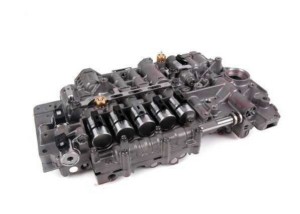 The early Porsche Cayenne commonly experienced a hard downshift from the transmission. In many circumstances this can be accompanied by much louder bang during gear changes and unpleasant hard shifts from the transmission. Make sure when you drive a Cayenne that the gear changes are smooth.
The early Porsche Cayenne commonly experienced a hard downshift from the transmission. In many circumstances this can be accompanied by much louder bang during gear changes and unpleasant hard shifts from the transmission. Make sure when you drive a Cayenne that the gear changes are smooth.
The problem was often miss-diagnosed as a physical failure in the transmission itself, when the more likely cause was in fact the valve body assembly within the transmission.
The valve body controls the selection of gears and changes between gears. This electromechanical device also contains all the intelligence for the transmission associated with mapping the engine performance and driver input to relevant gear changes.
The valve body actively controls the flow of pressurized fluid in the transmission enabling accurate, timely and smooth gear changes. Failure in the valve assembly causes heavy shifting and incorrectly timed gear changes. The results are loud unpleasant sounds from the transmission accompanied by neck jerking gear changes.
Despite the nasty behavior of the transmission, replacing the valve body typically returns normal smooth gear shifts and smooth driving. The valve body repair is considerably cheaper than replacing the whole transmission.
An older Cayenne with lots of miles could indeed have a worn transmission that may require replacement. We recommend you do not assume a valve body replacement will recover the transmission and seek advice from a Porsche repair shop before you buy a Cayenne that exhibits rough gear changes.
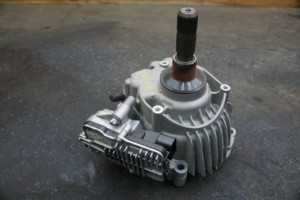 Vibrations Under Acceleration – Transfer Case Issues
Vibrations Under Acceleration – Transfer Case Issues
Many Cayenne owners have experienced vibrations or unsteady acceleration around the 25-35mph. This is usually subtle initially but gets steadily worse, especially when moving forward with the wheels turned. Sometimes, this can also show up as jerking when the PDK is going through 2nd to 3rd gears and accelerating between 30-50mph. The problem is caused by a faulty transfer case assembly.
The transfer case is a part of the four-wheel system. It directs the drive from the transmission to the front wheels and synchronizes the difference between the rotation of the front and rear wheels. It also features electronics which make the ability to control application of the drive possible in differing circumstances or programs – off road, snow/ice or sport mode.
Wear in the transfer case causes a mismatch between intended wheel speeds during acceleration and the subsequent vibration. It’s essential that you determine if the Cayenne you are thinking of buying, has this issue or if the problem has been resolved in the history on the vehicle. The repair requires replacement of the transfer case and can be expensive.
However, used Cayenne owners were recently provided some good news in regards to the transfer case issue. Porsche has announced an extension to the warranty period for the Cayenne transfer case. See our article covering the extended warranty announcement.
Porsche Cayenne Steering Column Fault
 Watch out for this indicator. This happens when a convenience system becomes inconvenient. Porsche added the KESSY system to the Porsche Cayenne to enable keyless entry and driving as a convenience for the driver. Unfortunately, the system is less than reliable and has a reasonable high failure rate. If the Cayenne you are looking to buy has the KESSY system, make sure you understand what repairs have already taken place and the current state of the system.
Watch out for this indicator. This happens when a convenience system becomes inconvenient. Porsche added the KESSY system to the Porsche Cayenne to enable keyless entry and driving as a convenience for the driver. Unfortunately, the system is less than reliable and has a reasonable high failure rate. If the Cayenne you are looking to buy has the KESSY system, make sure you understand what repairs have already taken place and the current state of the system.
Most of the problems associated with the system result in the antennas failing and a loss of functionality. Most people ignore this or don’t even realize it happened. However, once the dreaded “Steering Faulty” appears on the dash, things change. The steering wheel is now locked and the car is unresponsive to the key. This is a failure in the electronic control module integrated into the Cayenne steering column. The car is literally stuck where it is until you have it towed.
Vehicles showing this fault typically require the replacement of the steering column, however, accurate diagnosis by a competent shop first would be the recommended course of action. Steering column replacement is not fun and can be quite expensive. The parts alone can be over $2000 and the work will take a full day to complete.
If service history is available for the Cayenne you are looking to buy, check to see if this item appears in the records. If not, it’s certainly worth getting an estimate and budgeting for the problem to occur in the future.
Coolant Leaks on Porsche Cayenne
 While the early Cayenne had a significant problem with plastic coolant pipes, the later Cayenne has slightly different coolant leak issues. This is a critical area to be sure of before you commit to purchase. The range of coolant leak resolutions go from a small hose issue all the way to an engine removal. This is a critical area that requires careful examination of the engine for the tell tail signs of a coolant leak – we’d recommend you use a Porsche repair shop to evaluate this before you buy.
While the early Cayenne had a significant problem with plastic coolant pipes, the later Cayenne has slightly different coolant leak issues. This is a critical area to be sure of before you commit to purchase. The range of coolant leak resolutions go from a small hose issue all the way to an engine removal. This is a critical area that requires careful examination of the engine for the tell tail signs of a coolant leak – we’d recommend you use a Porsche repair shop to evaluate this before you buy.
The later Cayenne has a series of coolant pipes that are glued into their housings – great idea! Like all glue, over time the seal begins to fail and coolant leaks out. There are two likely spots for this to occur – the front of the engine or the rear of the engine close to the transmission joint.
The leak at the front of the engine is from the upper front coolant pipe which slips out of its housing when the glue fails. Porsche revised the design of the replacement part to be bolt in, so the problem should not return. This issue is common and typically runs about $500 in parts.
The leak at the rear is much more of an issue. The rubber hose is clamped to an aluminum insert in the housing that distributes coolant between the cylinder heads. The glue fails on the aluminum insert and coolant leaks out. The replacement part is updated with a screw in insert for the rubber hose to connect to.
The problem is getting this new assembly attached to the engine. Porsche recommends engine and transmission removal, which puts the cost for this minor leak into big money territory. Some repair shops have devised ways to get this job done without removing the engine assembly and can save their customers significant amounts of money.
Porsche Ceramic Composite Brake Option
 If your considering a Cayenne with the PCCB option fitted, it’s absolutely essential to have a professional opinion of the mileage remaining on the brakes.
If your considering a Cayenne with the PCCB option fitted, it’s absolutely essential to have a professional opinion of the mileage remaining on the brakes.
The PCCB or ceramic brake setup was a factory fitted option for the Cayenne and is generally seen on the S, Turbo and GTS models. Porsche Ceramic Composite Brakes (PCCB) use cross-drilled, carbon fiber reinforced ceramic discs with special composite pads. They produce amazing stopping power and are 50% lighter than a standard brake a setup. They also have a considerably longer life than their standard counterparts. However, the expected life of the PCC brakes does not always play out in reality.
If you are buying a Porsche Cayenne that has the PCCB option, it’s worth being certain how much life remains on the brakes. Parts for the front brakes alone could run you more than $10,000. Sounds like a good reason for selling or trading in a car! You don’t wat to find you need a $10K brake job just after buying a Cayenne!
Engine Fault Codes on Porsche Cayenne Models
 Before buying a used Cayenne, it is essential to know when the last time the system fault codes were cleared and to check the status of the emission monitors. It’s not difficult for a seller to clear the faults just before you arrive for a test drive. Clearing the engine faults also resets the emissions system to a state of “not ready.” Emission readiness tests often occur over multiple drive cycles. So, after a reset, emission faults may not return for a significant number of miles or drive cycles. So, no faults would return during your test drive.
Before buying a used Cayenne, it is essential to know when the last time the system fault codes were cleared and to check the status of the emission monitors. It’s not difficult for a seller to clear the faults just before you arrive for a test drive. Clearing the engine faults also resets the emissions system to a state of “not ready.” Emission readiness tests often occur over multiple drive cycles. So, after a reset, emission faults may not return for a significant number of miles or drive cycles. So, no faults would return during your test drive.
The V6 Cayenne for example, will develop a vacuum leak and set a check engine light. There can be many causes, but one of the most common is the failure in the PCV system. A failed diaphragm in the oil separator on the valve cover, allows unmetered air to enter the intake system and cause the engine to run lean. This fault may not return to be indicated on the dashboard as a CEL for a number of drive cycles.
The separator is built into the valve cover and cannot be replaced individually, so the repair requires the replacement of the whole valve cover assembly. Not an over expensive job as the engine and valve cover come from VW, but something to be aware of before you buy.
Again, this is easy for a competent repair shop to check or indeed the DIYer using a handheld scanner.
Camshaft Adjuster Failure – Porsche Cayenne Recall
 Generally, this affects vehicles produced between 2010 and 2012 model years. The problem lies in the aluminum bolts that secure the timing chain sprockets to the camshaft adjusters.
Generally, this affects vehicles produced between 2010 and 2012 model years. The problem lies in the aluminum bolts that secure the timing chain sprockets to the camshaft adjusters.
The Cayenne V8 engines have adjustable cam timing systems. A timing chain drives the adjuster to vary the position and rotation of the cam based on engine performance demands. Unfortunately, the bolts holding the adjuster to the camshaft break and cause a loss of timing on the intake camshaft. This will set engine faults for camshaft position. In some circumstances, significantly worse outcomes such as a catastrophic engine failure can occur.
Porsche was required to recall affected 2010 through 2012 vehicles to correct this problem. If you are looking at a model in those production years, you should definitely check for evidence the recall work was completed. More information on the recall at http://www.camshaftadjusterrecall.com/
HVAC – Climate Control
 A common problem on the Porsche Cayenne, is a condition where the climate control fan suddenly starts working intermittently, or only at one speed, or not at all. It may also become excessively noisy.
A common problem on the Porsche Cayenne, is a condition where the climate control fan suddenly starts working intermittently, or only at one speed, or not at all. It may also become excessively noisy.
When you test drive a used Cayenne, make sure you thoroughly test the climate control system and in particular pay attention the speeds of the blower.
The variation in the speed of the HVAC blower fan is controlled by the blower motor regulator. Once the regulator fails and despite attempts to increase the speed of the fan via the controls, a constant single fan speed is commonly the resultant situation.
The motor can also become noisy or simply not function at all. Under these circumstances it may be necessary to replace the blower motor itself. While not difficult, the job is time consuming and does require the removal of interior trim panels. It’s easy to overlook HVAC functionality on a test drive.
Practical Play Porsche
You could be living the dream of owning a Porsche and taking the kids to a fast food drive through in it! Whatever your plans are for a Porsche Cayenne, it’s a solid SUV that has great performance and a good degree of practicality. These days, there are some great bargains to be had provided you shop with caution.
The Cayenne does require care and likely more expensive attention than other comparably priced SUVs. However, there are a number of independent Porsche repair shops that can help to lower the costs of maintaining the car and we also have a list of the most common problems that could come up while you own it.





